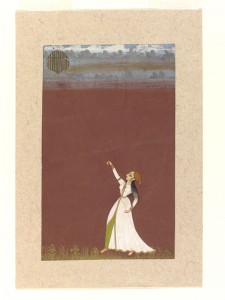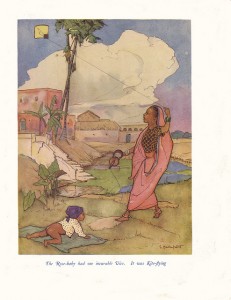BASANT IN LAHORE
A RAW DEAL
The kite flying fiasco

The involvement of people in kite flying is of two different kind. One is being a spectator and the other is a participator in same. Once upon a time everyone was involved in it and participated in one way or the other. Then it became a spectator’s thing.

Most people speak of kite flying in Lahore with little knowledge of same. Some put it at being centuries old, others think of it as a recent start. The truth is that the beginning of kite flying in Lahore is not recorded anywhere. You have to pick up bits and pieces from here and there. And then we start getting a picture of same.
I flew kites all my life. My father flew kites. My grandfather flew kites. And his father before him. But then beyond that nothing is known, for there it all comes in the British period. To go back to its history, we need to analyze first the ingredients needed for kite-flying. We hear the need of bamboo for the ‘shateers’. And we are told that the special kind of bendable bamboos came from Burma itself. Then we needed a special kind of light tissue paper that is called ‘guddi kaghaz’ here. Only two countries made them, and that was England and Germany. The paper for kite flying was made in these two countries. That means these two things arrived here with the British in 1849 AD, when they formally took over control of Lahore.

Then for the ‘Dore’ we needed strong but thin string, and that coated thread was never made here. Uncoated thread was of no use for kite-flying. The coated thread was again made by J & P Coats (English firm known as sangal marka) and Goeringer (German firm known as hearn marka). Both were not only excellent, but also affordable. Later on we also had string from the English firm, Oxley. Then we needed fine glass, not the kacha sheesha made here. Imported bottles particularly of empty alcohol ones were used. And then we needed a process to make it into powder glass. To roll it into MANJA, or string ready for kite-flying, it needed a mixture mechanism. To make it soft and pliable to hands (so that they are not cut), eagle’s eggs were put in the mix. The resultant ‘dore’ was so good, that even fingers were not cut by them. I have seen all this being done. I have seen the ‘dore’ being made, kites being made, and the ‘PINAS’ being wound in a round ball, very tightly rounded on it. Inside the PINAS, some ‘rehatas’ (pebbles) were put in the inner shell of coco-nut, so that when the pina was used, you could hear a jingle from within it. Now who else could have told you all these details today?
The Kites have to be differentiated too. First the simple kites, with a small frilled tail it became a female and was called a ‘Guddi’, and with a ‘Paan’ which was a huge triangle bottom pasted on the kite itself, it became male in character, and was called a ‘Gudda’. Now remember the term, Guddi and Gudda refer to a female and male doll and the language is pure Punjabi. We are not talking here about the design of same and the various styles of it.
The other type is a ‘PATANG’ and an elongated patang called a ‘KUP’. The shape of the Patang is of Lahore only. We have seen variation of this shape in Chinese kites, and more shape related things in Malaysian ones. There seems to be a direct connection of Malaysian kites with kites of Lahore. This certainly needs analysis, as the word itself is of different origin.
We see miniatures of kites roughly dating to the last period of 18th century, and mostly in the 19th century. But there is coolness and calmness around its flying. A couple are making love, embracing and also flying a kite in the air. And it is a cloth kite, there is no paper involved, and there is no concept of ‘PECHA’ there. A pecha of course is when two kites tangle with each other, resulting in the cutting of the string of one, and then the victor shouts the words ‘Bo-Kata’, and blows trumpet horns of olden times.

This fun loving event, source of happiness for the poor and the rich, and under a planned campaign, and active action, this event was taken over from the Lahoris. Indeed it was a RAW deal. This event had generated so much interest in the world, and it proved that Muslims were as fun loving people as any other, and it got so much media hype, that it scared the shit out of those lobbies in India, who would never like anything positive going on in the world press. This topic needs more space than available in one blog, and we will write more about it.
P.S. We will cover the historical references for kite-flying soon.

bo-kata
For the record i may be pointed out that J & P Coats company was actually founded in 1755, so they were very much there after 1849 in Lahore
.
Good deal of info, really !
……. i beg to dis-agree with your last paragraph though.
…………. in my personal view, today’s Lahore is more expert in EVILIZING a known classic healthy activity. Beyond basant, take for example the motorbike ‘wheeling’, take for example the ‘islaahi theatre’ of Alhmaraah fame (the ‘inspirational’ results of which are glamourized in the form of ‘seraiki films’ in south Punjab), take for example what we made of wedding events starting at after 3 A.M. in the morning, …. and from here it spreads to all over the country I beg your pardon !
.
Everyone is free to have ones own views. Wait till we actually write about it.